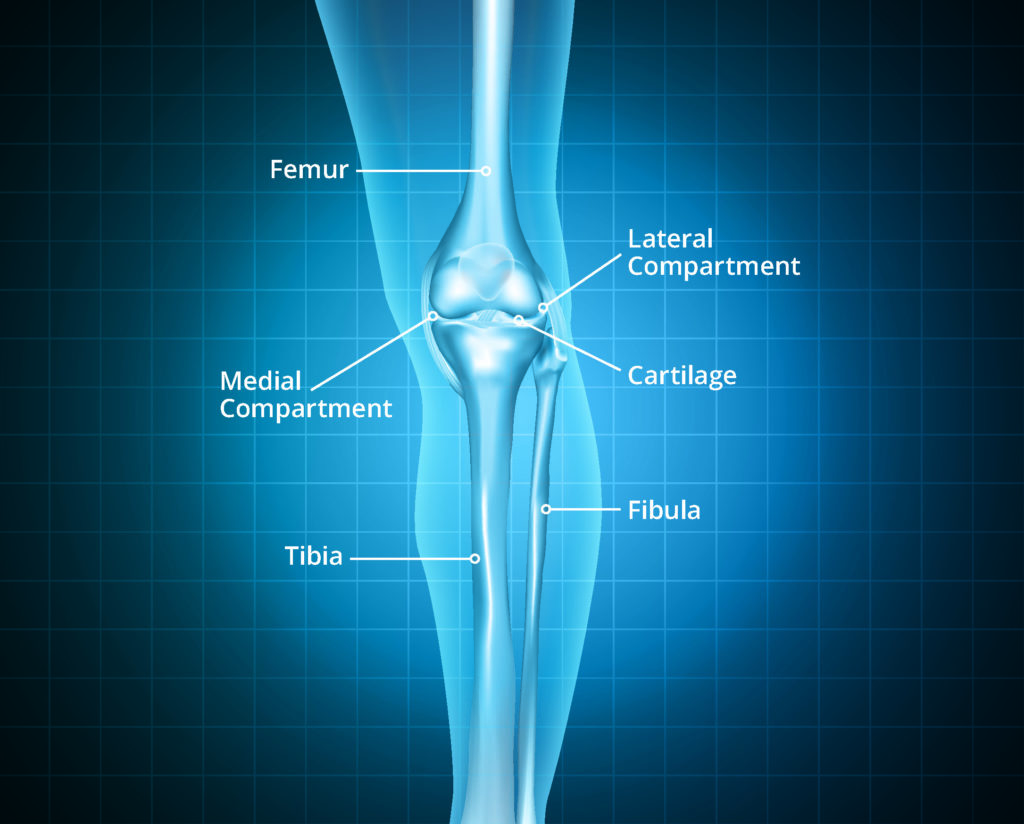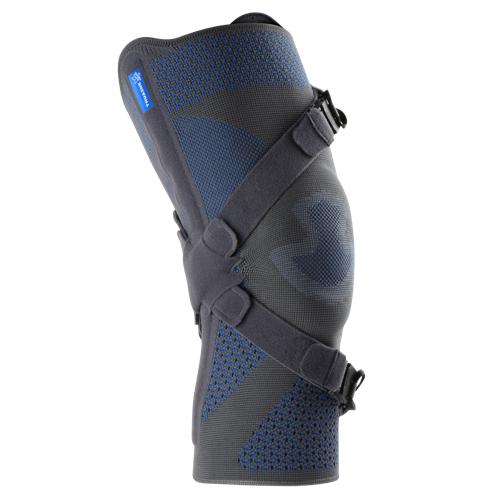No products in the basket.
Knee Osteoarthritis

In parallel, the onset of an inflammatory phenomenon occurs at the synovial membrane, liable to generate excess synovial fluid (known as synovial effusions). Once the bone is stripped of its cartilage and under the effect of day-to-day pressures, the local inflammatory phenomenon will progressively form bony outgrowths called osteophytes.
This can become very painful when moving the knee and obstruct day-to-day activities considerably, damaging quality of life.
Diagnosing osteoarthritis
The condition can be diagnosed by your GP through detailed patient history, physical assessment, and x-ray if needed. The examination might involve looking at joint swelling, limits to range of motion as well as looking at levels of pain, and impact on the quality of life. It is important to note that there is no correlation between the level of pain and/or limitation felt and radiological assessment in arthritic knees.
There are some predisposing factors, that increase the risk or chances of osteoarthritis:
- Sex – females are more at risk
- Age – over 45s are more at risk; over 70s show highest presentation
- Obesity – or raised BMI
- Abnormal leg alignment – often referred to as “bow-legged” (varus) or “knock-kneed” (valgus)
- Genetics – if a parent has suffered from OA
- Professions/ jobs – roles that include lots of heavy lifting, kneeling on hard floors or lots of going up and downstairs
- High level sports participation – ball sports, running, skiing, etc
- Previous ligament or meniscal knee injury
- Suffering from another joint disease – such as rheumatoid arthritis
Symptoms of osteoarthritis
The major symptoms of knee osteoarthritis are pain and stiffness, which can make it hard to move the knee and do some activities.
Symptoms vary from person to person but have a tendency to gradually worsen over time, and symptoms that originally came and went may become constant. Knee osteoarthritis often presents in one knee initially, but typically the other leg can become affected in time.
The knee is the most common joint in the body to be affected by osteoarthritis. Other symptoms usually include:
- Joint tenderness
- Knee appearing slightly larger, or slightly out of alignment
- Crepitus: a grating or crackling sound or sensation in your joints
- Limited range of movement
- Weakness and muscle atrophy (decreasing muscle bulk)
- Sensitivity to kneeling
- Knee giving way, feeling unstable
- Difficulty in going up and downstairs
- Sensitivity to cold or damp conditions
The different types of knee osteoarthritis
There are various types of knee osteoarthritis, relating to what area or areas of knee joint are affected by degeneration.

The knee is made up of 3 main compartments:
- The patellofemoral compartment is the joint between the patella and the end of the femur.
- The medial and lateral tibiofemoral compartments are the articular areas between the tibia and the femur.
- The tibiofemoral compartments are the weight-bearing compartments of the knee joint.
The medial compartment is the part of the knee joint closest to the midline of the body and the lateral compartment is on the outer aspect of the knee. Any or multiple compartments can be affected by arthritis.
The 4 main kinds of osteoarthritis:
- Medial Tibiofemoral Osteoarthritis will usually present with pain in mostly the medial compartment, and degeneration can lead to a varus alignment, often called a bow-legged alignment.
- Lateral Tibiofemoral Osteoarthritis is less common but can occur in women who present with a valgus or “knocked kneed” posture or in individuals who have had previous injury to the lateral structures of the knee. Lateral compartment osteoarthritis presents with pain in the outside compartment of the knee.
- Patellofemoral Osteoarthritis is a presentation where there is degeneration in the compartment between the patella and the femur, typically presenting with pain at the front of the knee.
- Tricompartmental Osteoarthritis is degeneration of the knee joint in all three compartments, pain is widespread in the knee and not localised to a particular part of the knee joint.
We recommend:

Action Reliever
- The Action Reliever is a knee brace with an off-loading action that utilises straps to create a dynamic three-point pressure system that is clinically proven to reduce osteoarthritis pain in the knee joints.
- The ActionReliever is available for both medial and lateral unicompartmental osteoarthritis, and its anatomically shaped straps are self-oriented and adjustable. ActionReliever is slim and discreet under clothing and stays comfortable all day.

.png)



